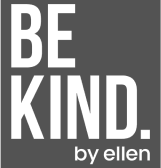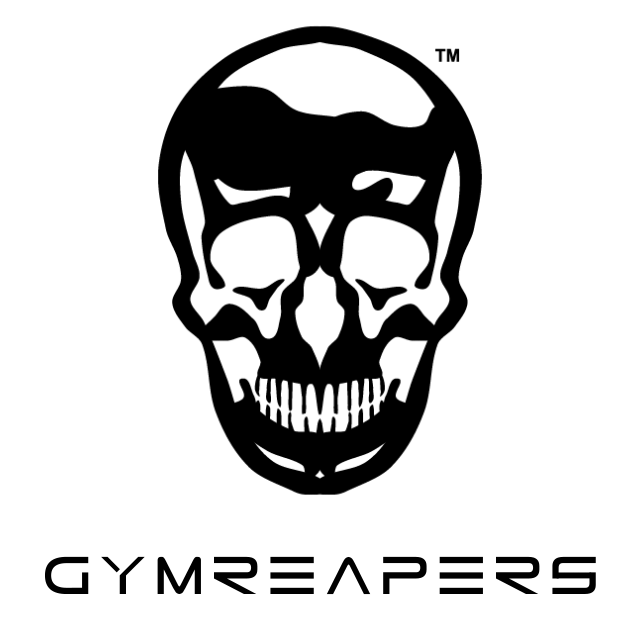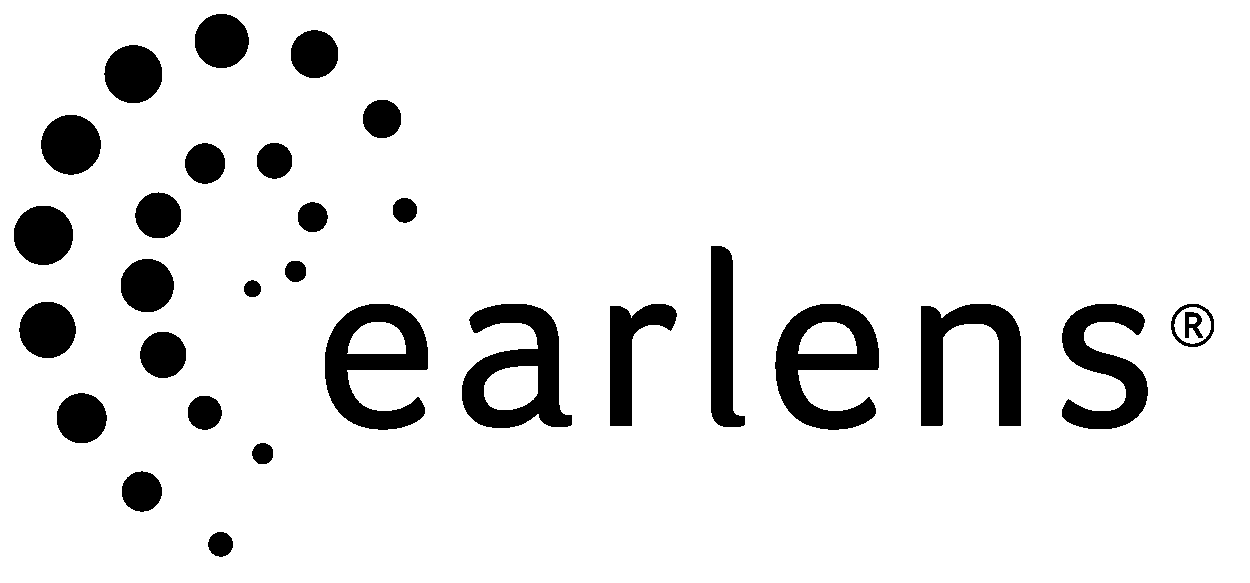What Is Branded Content On Instagram?
The personal branding experts known as influencers have taken over the marketing space by creating authentic and engaging content that actually appeals to people. They’re loved both by their followers and by the brands who sponsor their livelihoods via paid promotions. And what do businesses get in exchange from influencers for their payment? Branded content.

Brands we’ve worked with
What Is Lionize?
Lionize helps brands and agencies unlock the full potential of Influencer Marketing. Our A to Z solution manages every aspect of the Influencer Marketing process for you. With our software, you will save time and money while improving results. Our AI powered tech manages the entire partnership lifecycle for you within one easy-to-use platform.
Influencer Marketing. Simplified.
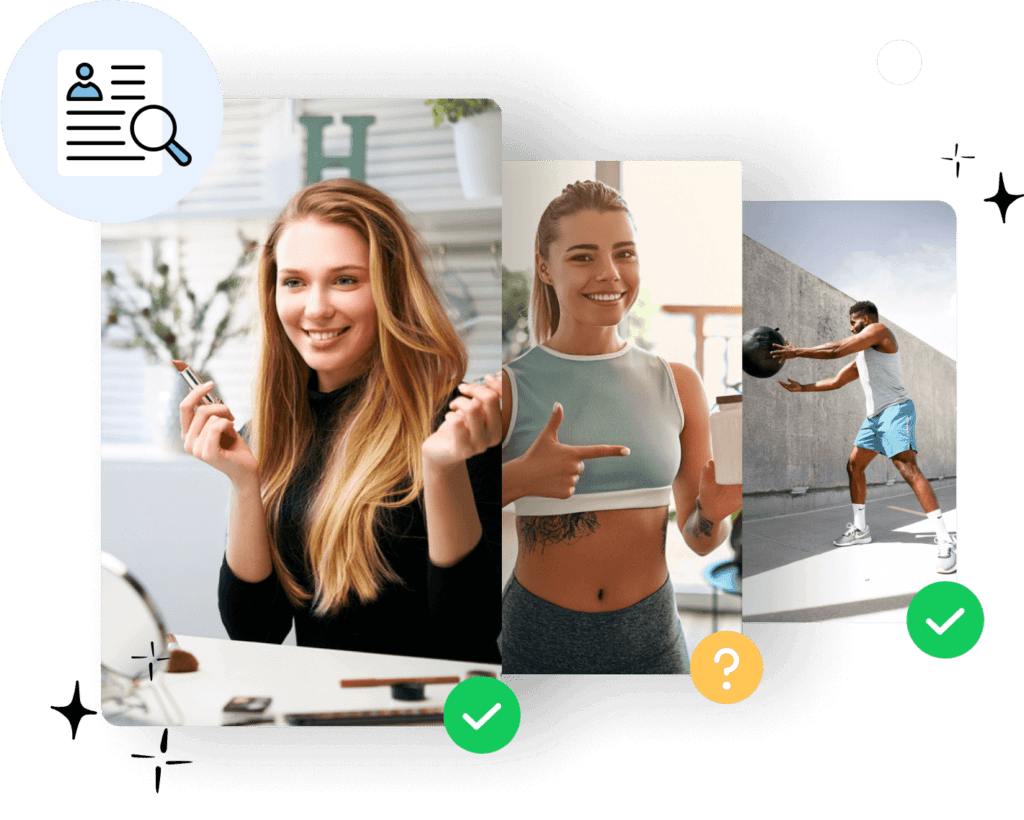
1. Recruitment
Kickoff the Lionize recruitment process by defining your strategy.
The first step is figuring out what type of Influencers will tell your story best. With Lionize, you’ll find authentic and unique partners that fit your brand. Our proprietary search engine identifies talent from the entire world of social media based on an ideal Influencer profile you’ll create with the help of your Account Manager.
2. Selection
Once your program goes live, Influencers will apply and enter a selection queue available on your dashboard.
At this stage, Lionize becomes a ‘digital match-maker.’ Much like a dating app, you’ll be presented with a list of targeted Creators that fit your parameters and want to work with you. You’ll approve and deny based on who you feel is the best fit. These selection decisions are under your complete control.
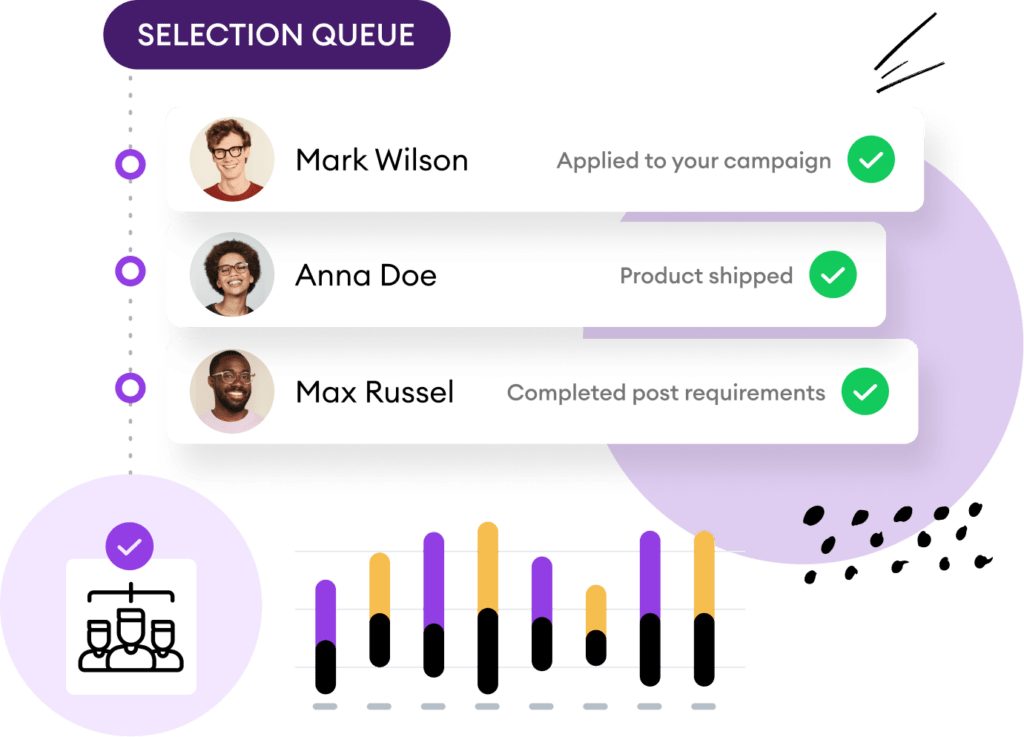
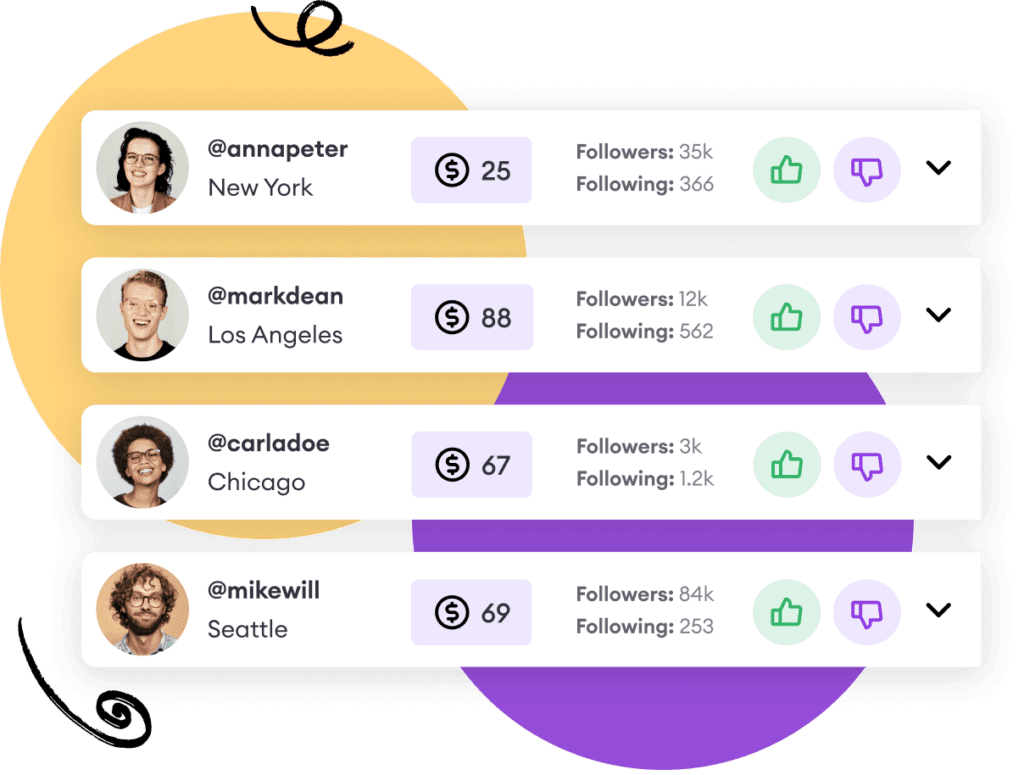
3. Management
As you select your desired partners on a rolling basis, Lionize activates and manages them for you!
Lionize manages the status of each relationship on your behalf through its automated communication and reminder system. No more juggling hundreds of emails back and forth or messy tracking in spreadsheets.
4. Reporting
Finally, you can just sit back and enjoy watching your team of Influencers promote your brand. Tracking, reporting, payment, reactivation – Lionize handles it all.
On your Lionize dashboard, you’ll be able to track your top performers and all post activity. We share a wide variety of data and metrics behind each piece of content created by your Influencers including engagement and reach.Want to repurpose these posts for other digital efforts? No problem, we make it easy to export all of your campaign data and UGC.
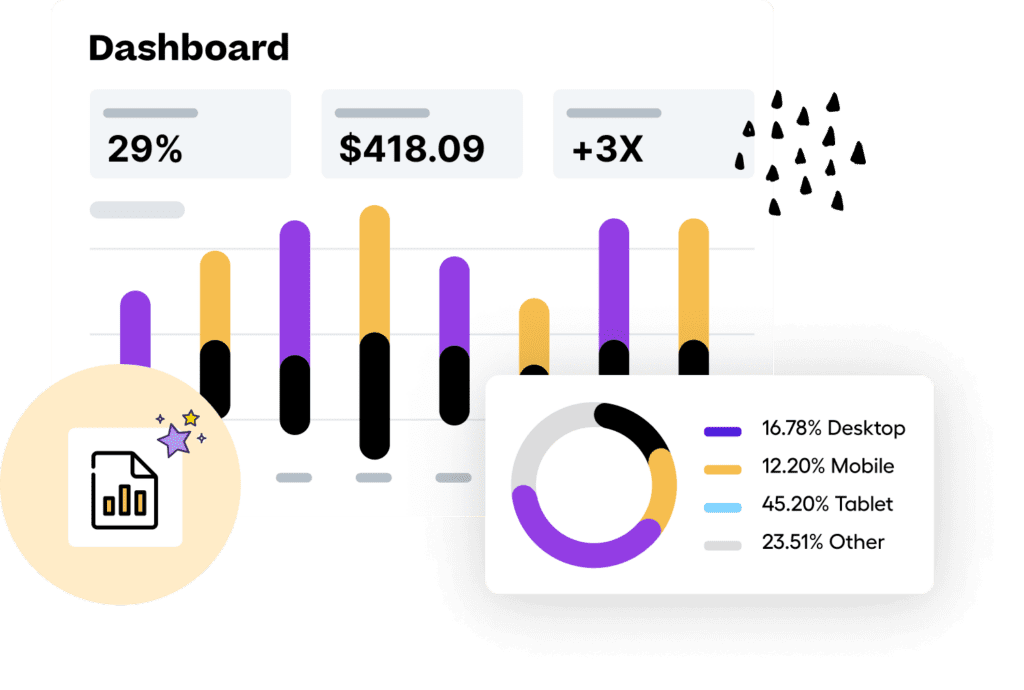
What Is Branded Content On Instagram?
Let’s face it: most of us are pretty tired of advertising at this point.
Whether it be loud TV commercials with tired jingles, unskippable video ads that precede our beloved YouTube videos, or radio spots that have pushed us to music streaming services, we are tired of traditional advertising.
So, what’s filling today’s advertising landscape instead? One word: influencers.
The personal branding experts known as influencers have taken over the marketing space by creating authentic and engaging content that actually appeals to people. They’re loved both by their followers and by the brands who sponsor their livelihoods via paid promotions.
And what do businesses get in exchange from influencers for their payment? Branded content.
In this blog, we’ll discuss what branded content is, give some examples, and walk through how paid promotions actually work on Instagram.
What Does Branded Content Mean?
The definition of branded content ranges based on the marketer you’re talking to, but Instagram’s definition essentially equates it with any paid partnership. According to their terms, branded content is “content that features or is influenced by a business partner for an exchange of value (for example, where the business partner has paid the creator or publisher).”
So, on the brand side, this can be any content created by an influencer or brand ambassador that promotes your brand or offerings. Typically, you’ll be paying for it (although some smaller creators accept merch instead), but as we’ve discussed before, influencer marketing is incredibly cost-effective even despite creator fees.
And on the influencer side, branded content is any post that was commissioned, sponsored, or paid for by a company.
How Does Branded Content Work On Instagram?
Branded content, as a feature, is a win-win for everyone involved in instagram influencer marketing. It allows creators to more easily monetize their content and brands to more easily form and keep creator partnerships.
While businesses have a host of marketing tools available to them on Instagram, including posting their own organic content, sponsoring posts, running story ads, etc., it’s a whole lot easier to get tagged in a creator’s branded content post, approve it, and have a published “paid partnership” tag verifying the post.
On the creator side, branded content tools allow influencers to build up their reputation of being a great partner to work with. The more official branded content posts you have, the more you can show yourself as a credible creator and attract more future business partners.
Here’s the way that branded content on Instagram actually works. It all gets done through a tab in Settings that both brands and their influencer partners must turn on and coordinate about on a campaign basis. To start, brands must have a business account on Instagram, and creators will need to have a creator account.
For brands, to turn on branded content, you can travel to your Settings within the Instagram app, head to the Account tab, and then the tab called “Branded Content.” For creators, this will also be in Settings, under the Creator tab, and also under a tab called “Branded Content.”
From there, creators can start rolling out branded content with the paid partnership label, and brands can manage and approve their incoming tag requests, as well as create a list of approved business partners for easier rollout in the future!
What Are Some Examples of Branded Content?
If you’ve scrolled through Instagram in the last few months, you’ve definitely seen some of the new branded content markers, even if you haven’t realized it.
Here are a few examples of branded content:
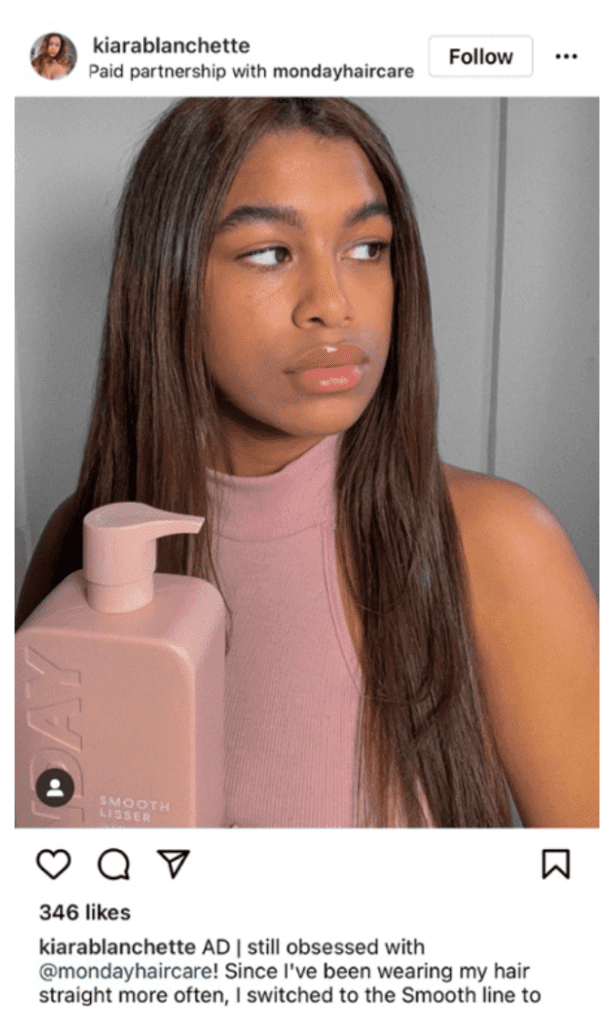
Kiara Blanchette x Monday Haircare
Makeup expert, skincare guru, and beauty influencer, Kiara Blanchette (@kiarablanchette), has had multiple paid partnerships featuring branded content. Here’s an example of a collaboration she did with Monday Haircare (@mondayhaircare), which fit her niche and audience well.
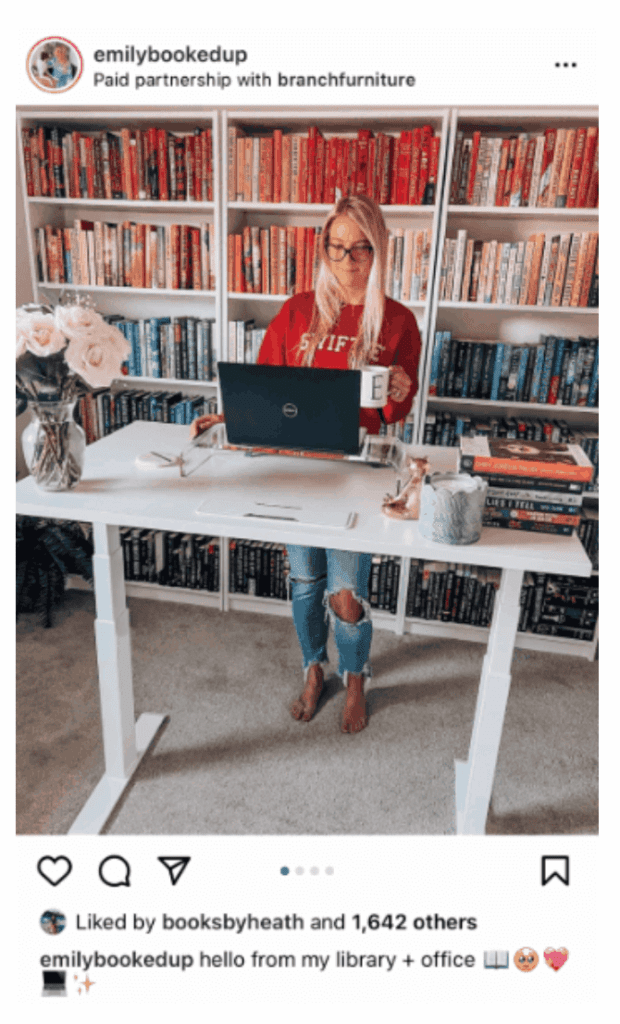
EmilyBookedUp x Branch Furniture
“Bookstagrammer,” @emilybookedup, grew her following by recommending great reads. She collaborated with Branch Furniture (@branchfurniture) to create branded content that would appeal to her audience of fellow readers.
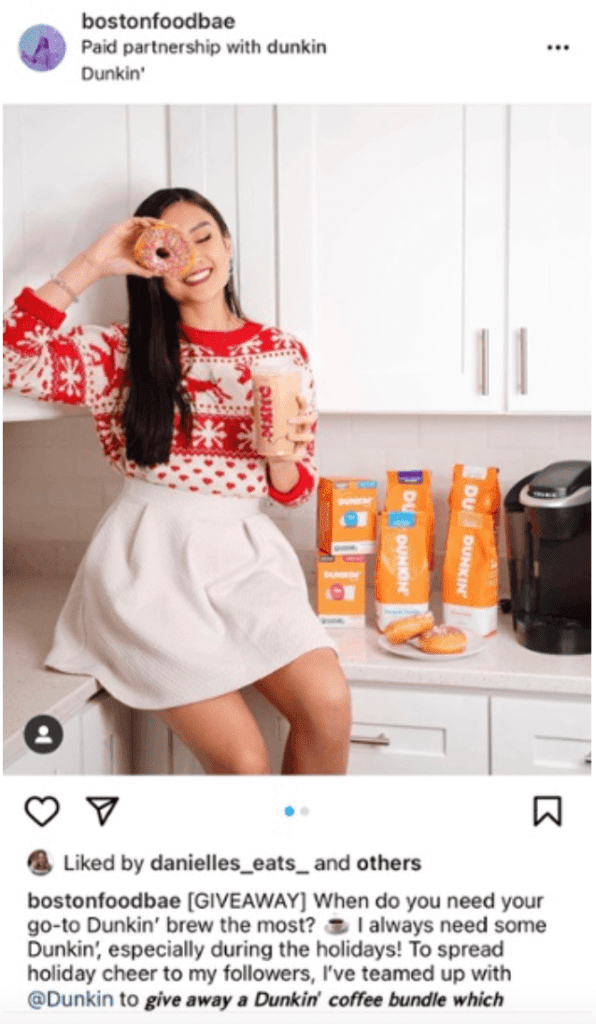
BostonFoodBae x Dunkin Donuts
Boston foodie better known as @BostonFoodBae, landed a paid collaboration with New Englanders’ favorite chain, Dunkin Donuts (@Dunkin). In this example of branded content, she did a giveaway of a holiday spread.
What Are the Rules Behind Branded Content On Instagram?
There are a few major rules that dictate the way you can post promotional content on Instagram. For example, it’s important to remember that branded content warnings are necessary according to the Federal Trade Commission (FTC). Their policies require that anyone – creator, business, or personal account – must tag business partners in their branded content posts when there’s an exchange of value between a publisher and a business partner.
Instagram’s branded content tools make this easy, if you are eligible for them. However, the Instagram Partner Monetization Policies require that content creators meet the following standards in order to use their Monetization and Promotional tools:
- Reside in an Eligible Country. Creators must be in a country where the products they’re promoting can actually be sold.
- Comply with their Community Guidelines. Instagram has rules against hate speech, calls for violence, etc., and reserves the right to revoke monetization access from creators who spread hate online.
- Comply with their Content Monetization Policies. For understandable reasons, many more rules govern promotional content than personal sharing.
- Share accurate information. In 2019, Instagram took a step toward fighting against the wave of misinformation by implementing “false information” labels. Creators who get flagged for sharing fake news on Instagram too many times can be stripped of their monetization privileges.
- Monetize authentic engagement. No fake followers or artificially boosting engagement allowed.
- Follow their Payment Terms. Creators also need to comply with Instagram’s Community Payment Terms.
- Develop an established presence. Though they don’t specify how many followers are enough, another requirement is maintaining a “sufficient following.”
- Follow their rules for politicians and governments. Government officials, as well as political parties, candidates, and committees, are not allowed to monetize their Instagram presence.
- Avoid systemic violations. Basically, don’t break any of the above rules, and especially don’t do it multiple times.
How Do Paid Partnerships Work On Instagram?
Paid partnerships, also known as sponsored posts or what Instagram calls branded content, allow brands to pay influencers to create and share content that promotes their products or services. These posts include a “paid partnership” or “sponsored” label, so that followers know the post is an advertisement.
Here’s a quick walkthrough of how paid partnerships typically work on Instagram:
- The brand finds good potential influencer partners. Brands should research and identify influencers who align with their target audience and have a following that would be interested in their products or services. Influencers with high engagement rates and a strong connection with their followers are considered more valuable to work with.
- The brand reaches out to the influencer they want to partner with. Once brands have identified the right influencer, they’ll reach out to them through Instagram’s direct messaging feature or email to inquire about their rates and availability. Brands should introduce themselves and explain the campaign they would like the influencer to promote.
- The brand and influencer negotiate their terms. Once an influencer agrees to work with a brand, they negotiate the terms of the partnership, such as the content to be shared, the duration of the partnership, and the payment amount. It’s important to agree on the terms and the expectations of the partnership upfront.
- The influencer creates the content. The influencer then creates the content for the branded post (usually a photo or a video). The content should align with the brand’s guidelines and should be in line with the influencer’s style to avoid looking too sales-y.
- The influencer posts the content and tags their brand partner. The influencer will then post the branded content on their Instagram account and tag the brand as their brand partner in their Branded Content tab in settings. The brand will approve that tag, and the post will then be marked as an official paid partnership.
- They track the post or campaign performance. Both the brand and the influencer can track the performance of the branded post, including the reach, impressions, and engagement, using Instagram’s built-in analytics tools or third-party analytics platforms.
- The brand pays for the influencer’s work. Brands should pay the influencer for the sponsored post, either upfront or based on the post’s performance, as agreed in the initial negotiation.
Paid partnerships on Instagram are a very popular and cost-effective way for brands to reach and engage with their target audience, especially with these new branded content tools.
However, remember that it’s crucial to work with influencers who align with your brand, have a following that could be interested in your product, and ideally, have a high engagement rate, to ensure your campaign’s success.
How Lionize Can Help With Your Influencer Marketing Strategy
Get your influencer marketing strategy off the ground with Lionize. Our software makes it easy to find the right influencers for your campaign, contact them, keep track of campaigns, and even make payments. Book a Discovery Call today to see how Lionize can help your brand.



